éric béridon
Artistical statement
"Assemble in one process body and mind, nature and civilization"
"What really interest me is to be as close as possible to the link that could exist between nature and culture, body and mind, material and spiritual.
Is the spirit a spiritual principle detachable from the body, if this is the soul and if it is approached in a religious way?
Or an empirical and elitist principle of the animal, if one contemplates it in a scientific way?
Is it matter that creates the mind or spirit that permeates matter?
To approach it, I had to tend towards a work, not additive, but subtractive, purging my gesture. The technique always remaining at the service of the subject. I did not wish to be in the line of the painters of the transformation, I did not want to enslave the painting, the drawing.
Is the spirit a spiritual principle detachable from the body, if this is the soul and if it is approached in a religious way?
Or an empirical and elitist principle of the animal, if one contemplates it in a scientific way?
Is it matter that creates the mind or spirit that permeates matter?
To approach it, I had to tend towards a work, not additive, but subtractive, purging my gesture. The technique always remaining at the service of the subject. I did not wish to be in the line of the painters of the transformation, I did not want to enslave the painting, the drawing.
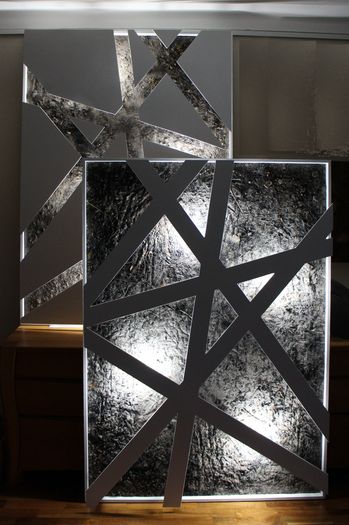

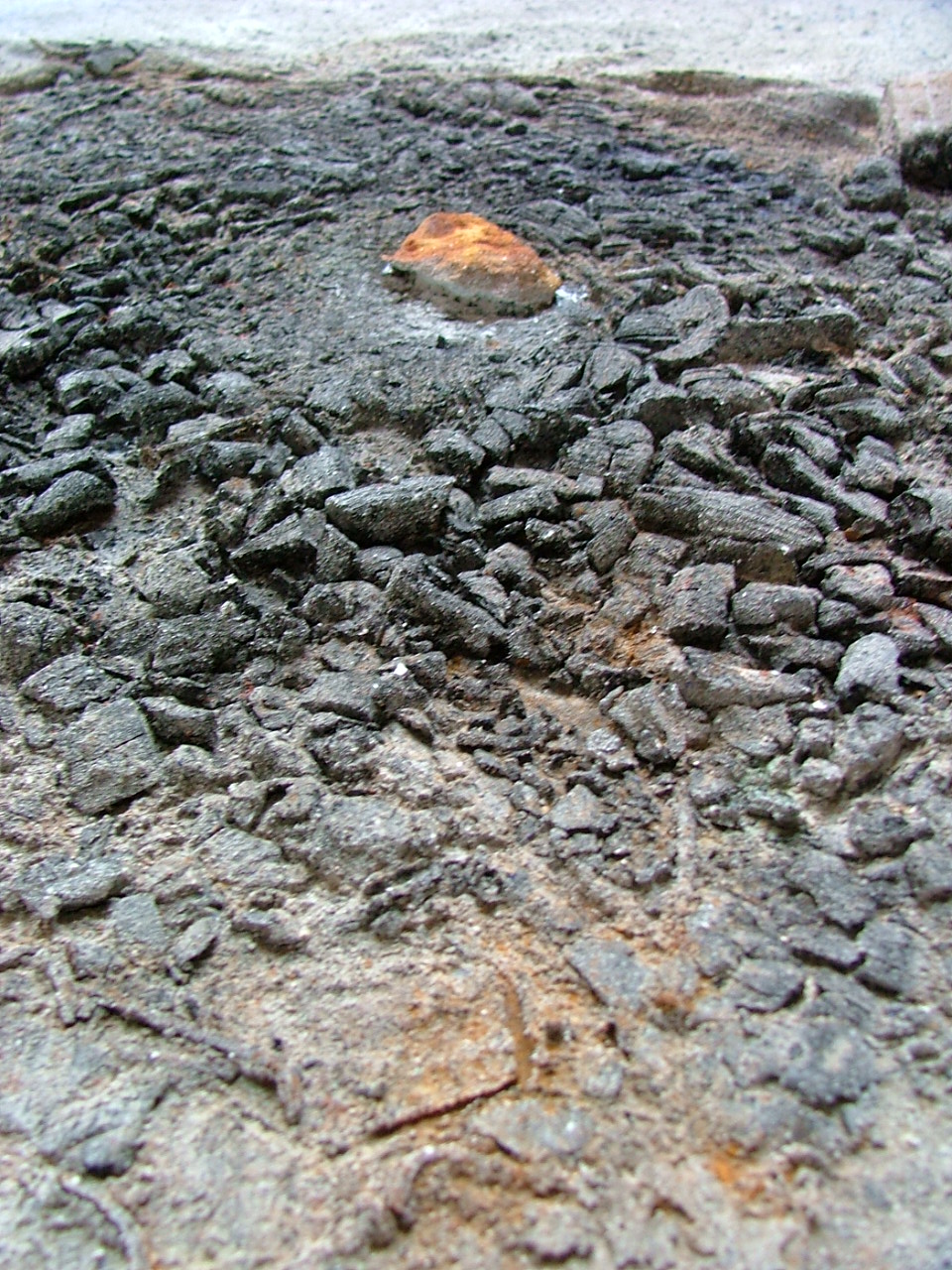
I also did not want to be in the line of works that were only conceptual, where the emergence of the idea takes precedence over the environment.
I voluntarily limit my intervention to leave to nature and matter their creative power.
In my work, matter is not layed down on the canvas, nor controlled by my gestures; it often results, as in some of my pieces, from an imprint made on the ground of a remnant of extinct fire. Fire that refers to our first origins.
All the interest over the years has been to confront or associate with this matter a plastic representation of the spirit:
I voluntarily limit my intervention to leave to nature and matter their creative power.
In my work, matter is not layed down on the canvas, nor controlled by my gestures; it often results, as in some of my pieces, from an imprint made on the ground of a remnant of extinct fire. Fire that refers to our first origins.
All the interest over the years has been to confront or associate with this matter a plastic representation of the spirit:
First artwork of sculptures

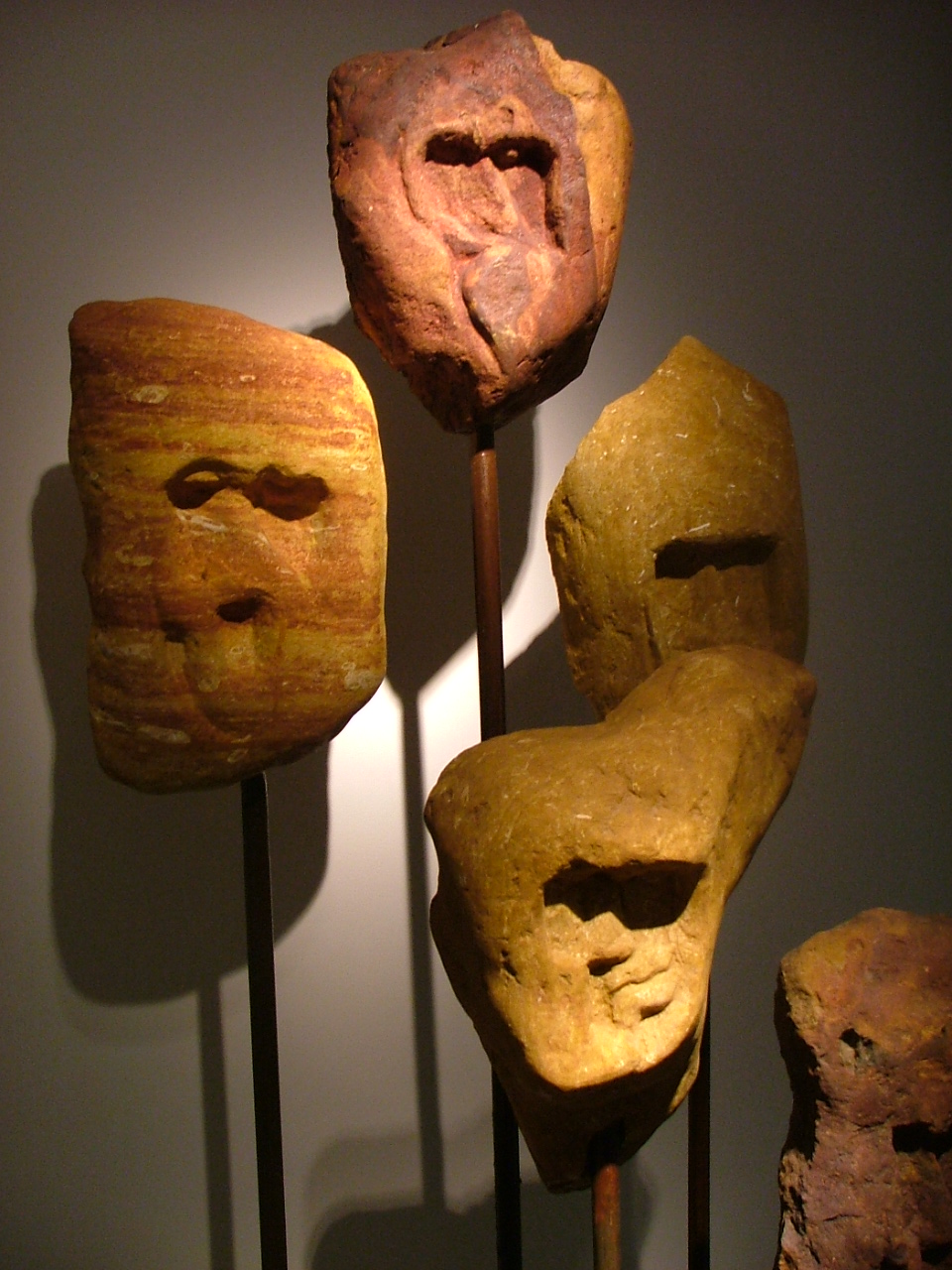
In my first works of sculpture, my intervention was summarized work in hollow; natural light makes the faces in hollow appear like fossilized souls.
The work presented is constituted essentially of ochre (in its rock/stone form) and of rusted metals. The stones come from the Vaucluse, the Ochre region of France. They are combined with rusted metal. Both the stone and the metal go through the oxydisation process, which is represented here as the passing of time, old age and death.
The daylight brings life to these stones, a timeless moment that illuminates the spirit within. I purposely minimized my intervention with these raw materials, so as to allow nature to use its creative powers. These once abandoned materials now find themselves joined together. This marriage of textures which I helped create, has brought to life another type of existence.
The elevation of the stones onto the metal rods represents the rising of the soul having found a sudden lightness and having left its original lifeless, shapeless and heavy form.
The work reflects humanity now and throughout time; the materials used reinforcing our differences, but also joining us together with the same spirit.
The work presented is constituted essentially of ochre (in its rock/stone form) and of rusted metals. The stones come from the Vaucluse, the Ochre region of France. They are combined with rusted metal. Both the stone and the metal go through the oxydisation process, which is represented here as the passing of time, old age and death.
The daylight brings life to these stones, a timeless moment that illuminates the spirit within. I purposely minimized my intervention with these raw materials, so as to allow nature to use its creative powers. These once abandoned materials now find themselves joined together. This marriage of textures which I helped create, has brought to life another type of existence.
The elevation of the stones onto the metal rods represents the rising of the soul having found a sudden lightness and having left its original lifeless, shapeless and heavy form.
The work reflects humanity now and throughout time; the materials used reinforcing our differences, but also joining us together with the same spirit.
Initial series of F. 2005 to 2009
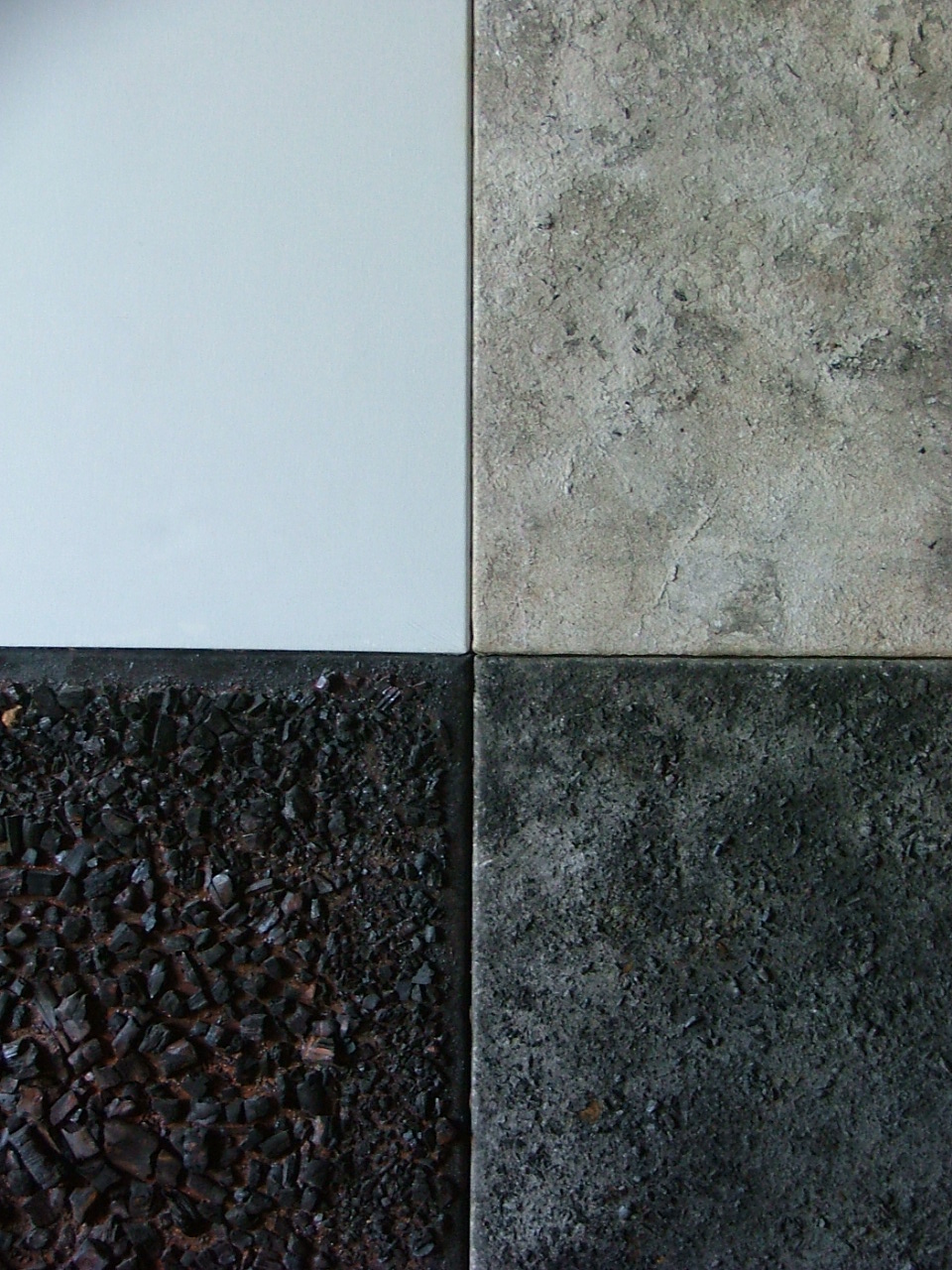
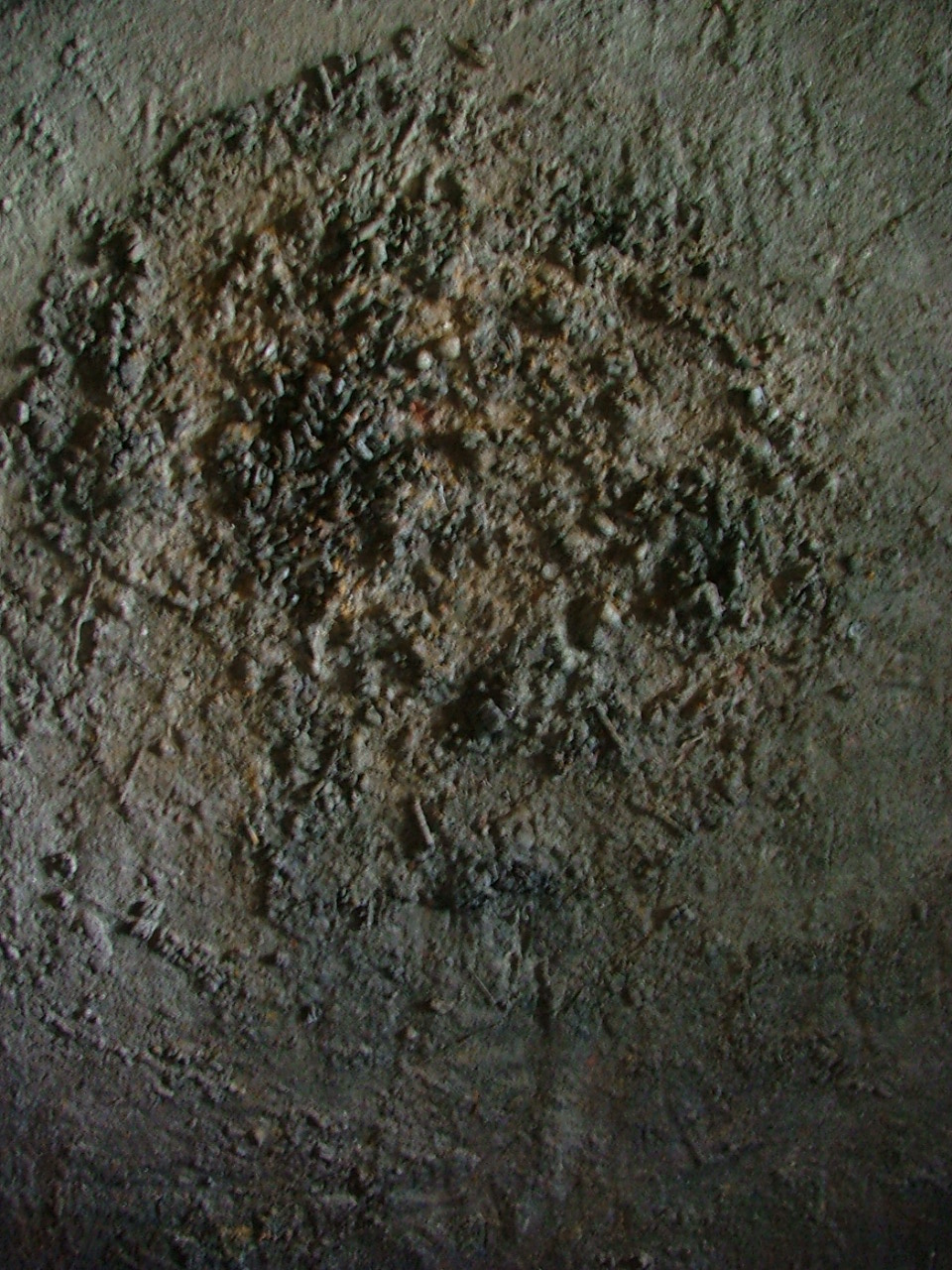
For the initial series of F. artworks (artwork with fire imprint) started in 2005 and continued till 2009, what counted was to keep the essence of my first works in three dimensions (sculptures) that is to say, leave to nature its creative power, while minimizing my intervention. Assemble in one process the body and mind, nature and civilization and not to oppose them.
This work is not in the line of transformation painters; I would not like to control art with a mixture of colours or forms. I find this process too conclusive, too technical.
I do not want to be in the line of more conceptual work or where the ideas take precedence over the environment. It is too pretentious with regard to nature.
Fire, like rusting, is the same process of natural destruction. It also contains the paradox of life and death, of obscurity and light, of colour and monochrome. I associate it with art in the form of coloured pigment, representing life, and making the black synonym of death vibrant. The spirit materializes by my gesture reduced to just laying down coloured pigments on the canvas.
Finally, the canvas presented vertically modifies the natural horizontal position of fire. One finds the perception in it different and it makes one feel they are diving into the art like an imprint of themselves.
This work is not in the line of transformation painters; I would not like to control art with a mixture of colours or forms. I find this process too conclusive, too technical.
I do not want to be in the line of more conceptual work or where the ideas take precedence over the environment. It is too pretentious with regard to nature.
Fire, like rusting, is the same process of natural destruction. It also contains the paradox of life and death, of obscurity and light, of colour and monochrome. I associate it with art in the form of coloured pigment, representing life, and making the black synonym of death vibrant. The spirit materializes by my gesture reduced to just laying down coloured pigments on the canvas.
Finally, the canvas presented vertically modifies the natural horizontal position of fire. One finds the perception in it different and it makes one feel they are diving into the art like an imprint of themselves.
Series of F. 2010 to 2011
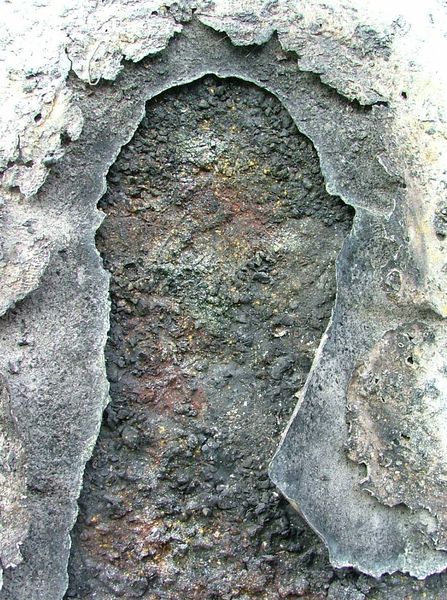
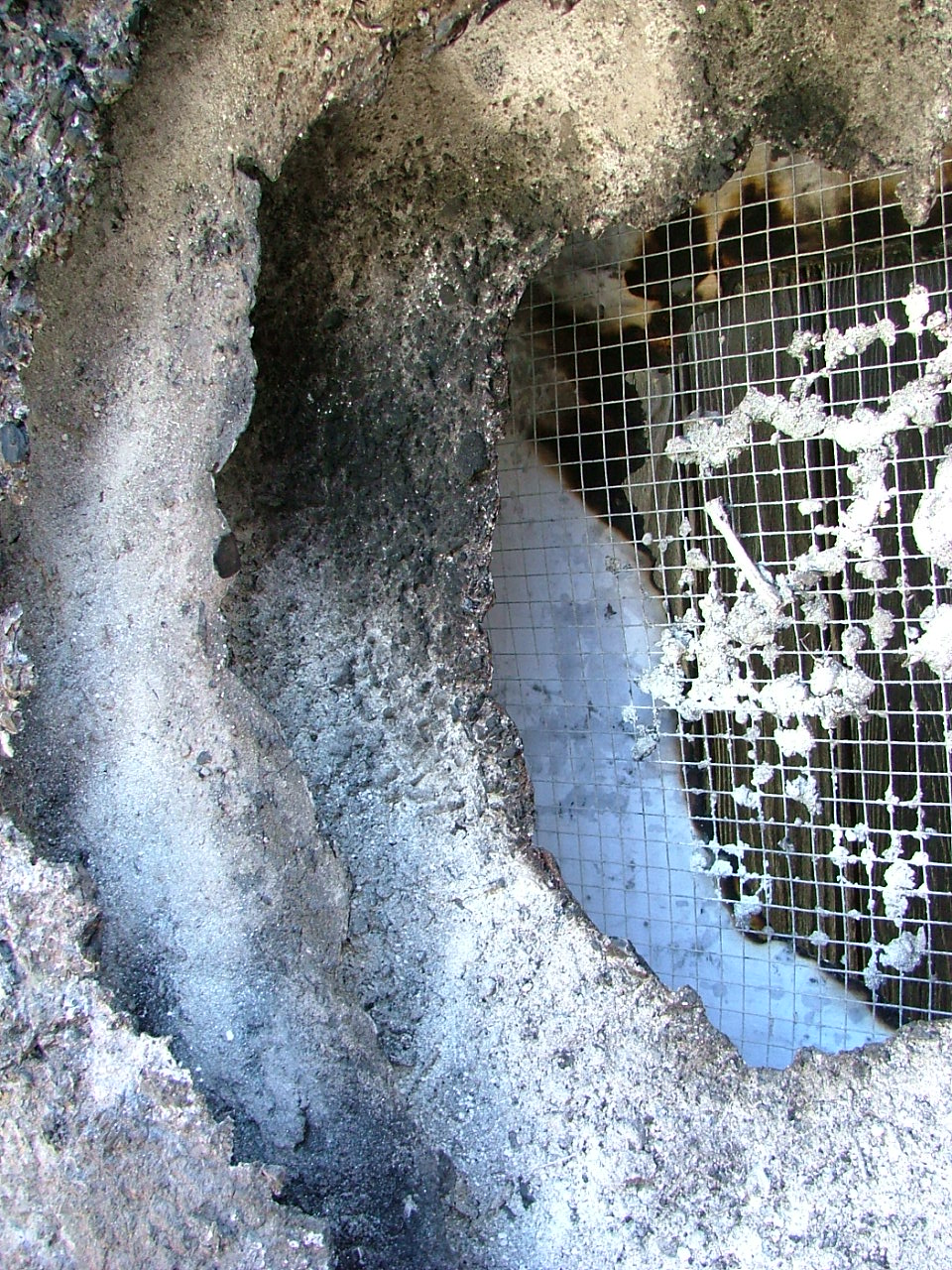
As of 2010, the plastic representation of the spirit takes several forms: either a figurative form, vaporous, which does not represent the body but the spirit that comes to impregnate the matter; either in the form of strata as parallel universes; either in a more conceptual form but always confronted with matter.
"My approach still aims at establishing a link between nature and culture, approaching as closely as possible the fusion between the body and the spirit.
The body is matter, matter soil, and in my paintings, ashes, charcoal, stones ...
The spirit is light, light color, and in my work pigments.
When present, the figure is not representative of the body but of mind. It gives a vaporous form, almost ghostly, which comes to live in the material (the body).
Is the spirit a spiritual principle detachable from the body, in the case of the soul and if you approach it in a religious way or an empirical elitist thinking principal of the animal, if the considered in a scientific manner?
Is it the material that creates the mind or the spirit that impregnates the material?
In the pieces of the series F. and from 2010, this research is shown by an in-depth work, with multiple layers as a universe in a thousand leaves. The body and the mind do not lie on the same level, this is the eye by observing that gathers them together as an entity.
Those artworks are neither paintings nor sculptures, nor two dimensions or three dimensions, but the result of another approach, where the notion of space and the notion of time are different.
Unlike other existing plastic forms, whose subject lies on the surface and on which the look just types, it is no longer to bring out things from inside to outside, but to enter the form to open other dimensions.
Here, the object does not interrupt the look. The interior becomes the subject of the approach.
The more I work the more I realize that I do not see but feel things, I'm not a painter of vision but of the penetration.
"My approach still aims at establishing a link between nature and culture, approaching as closely as possible the fusion between the body and the spirit.
The body is matter, matter soil, and in my paintings, ashes, charcoal, stones ...
The spirit is light, light color, and in my work pigments.
When present, the figure is not representative of the body but of mind. It gives a vaporous form, almost ghostly, which comes to live in the material (the body).
Is the spirit a spiritual principle detachable from the body, in the case of the soul and if you approach it in a religious way or an empirical elitist thinking principal of the animal, if the considered in a scientific manner?
Is it the material that creates the mind or the spirit that impregnates the material?
In the pieces of the series F. and from 2010, this research is shown by an in-depth work, with multiple layers as a universe in a thousand leaves. The body and the mind do not lie on the same level, this is the eye by observing that gathers them together as an entity.
Those artworks are neither paintings nor sculptures, nor two dimensions or three dimensions, but the result of another approach, where the notion of space and the notion of time are different.
Unlike other existing plastic forms, whose subject lies on the surface and on which the look just types, it is no longer to bring out things from inside to outside, but to enter the form to open other dimensions.
Here, the object does not interrupt the look. The interior becomes the subject of the approach.
The more I work the more I realize that I do not see but feel things, I'm not a painter of vision but of the penetration.
Series of F. from 2012

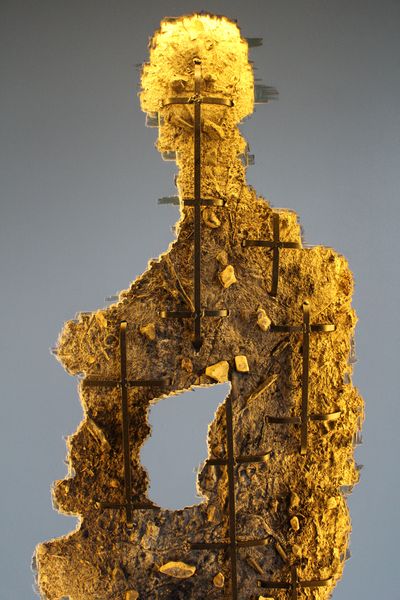
"Is it the matter that creates the mind or the spirit that permeates the matter?"
The question remains at the center of my approach. To approach it, I had to tend towards a work, not additive, but subtractive, purging my gesture.
The pieces of the series F. since 2012 reflect a work of contrasts:
- Form contrast between matter (the imprint of the remains of a fire) representative of the body and conceptual work (the intersecting lines) assimilated to the spirit.
- Texture contrast between the asperity of the mater and the smooth appearance of the geometric pieces.
- Tonality contrast between black charcoal and white geometric shapes.
- Brightness contrast between the elements in the dark and those in the light.
Since 2012 some works involve a new element: artificial light. Light is an integral part of my artwork. It is not there to "illuminate" the frame, nor for decorative. It acts as a medium and creates the link between natural elements (the body) and those more conceptual (the spirit). Thereby it never appears directly to the viewer, it is located 'between' the elements. The relief of matter by capturing light creates a vibration and it is no longer possible to know if the geometric forms are in hollow or are levitating. In addition, more external light decreases, the inner light takes precedence over the formal aspect of the. The light then becomes the own energy of the artwork. It should be noted that there are several ways of reading those artworks, according to whether they are seen day or evening, with or without the light of the LED lights. Contrasts of brightness and tonality can then be reversed; the dark parts become clear and the blacks appear white.
The question remains at the center of my approach. To approach it, I had to tend towards a work, not additive, but subtractive, purging my gesture.
The pieces of the series F. since 2012 reflect a work of contrasts:
- Form contrast between matter (the imprint of the remains of a fire) representative of the body and conceptual work (the intersecting lines) assimilated to the spirit.
- Texture contrast between the asperity of the mater and the smooth appearance of the geometric pieces.
- Tonality contrast between black charcoal and white geometric shapes.
- Brightness contrast between the elements in the dark and those in the light.
Since 2012 some works involve a new element: artificial light. Light is an integral part of my artwork. It is not there to "illuminate" the frame, nor for decorative. It acts as a medium and creates the link between natural elements (the body) and those more conceptual (the spirit). Thereby it never appears directly to the viewer, it is located 'between' the elements. The relief of matter by capturing light creates a vibration and it is no longer possible to know if the geometric forms are in hollow or are levitating. In addition, more external light decreases, the inner light takes precedence over the formal aspect of the. The light then becomes the own energy of the artwork. It should be noted that there are several ways of reading those artworks, according to whether they are seen day or evening, with or without the light of the LED lights. Contrasts of brightness and tonality can then be reversed; the dark parts become clear and the blacks appear white.
Works on paper from 2023
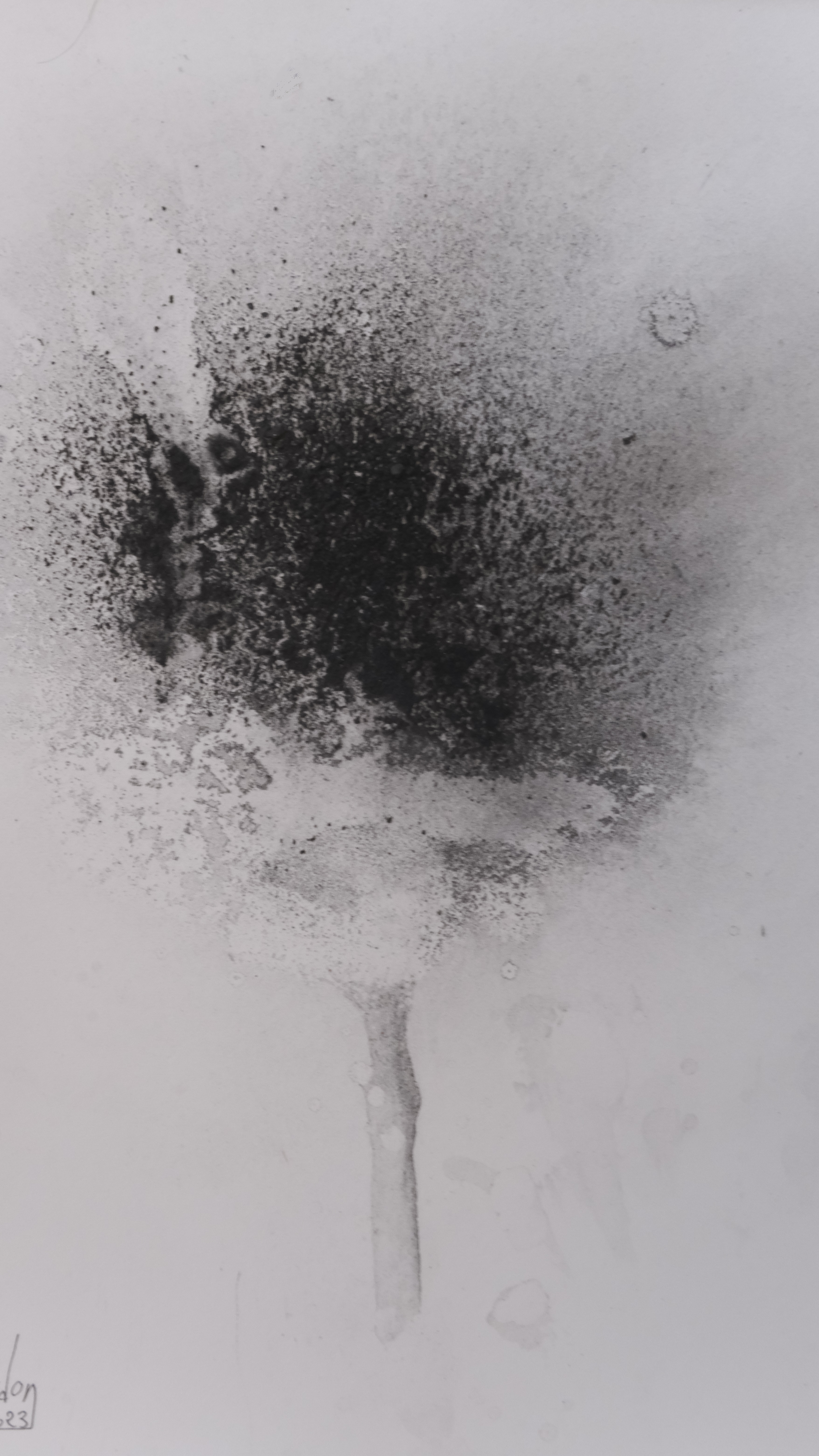
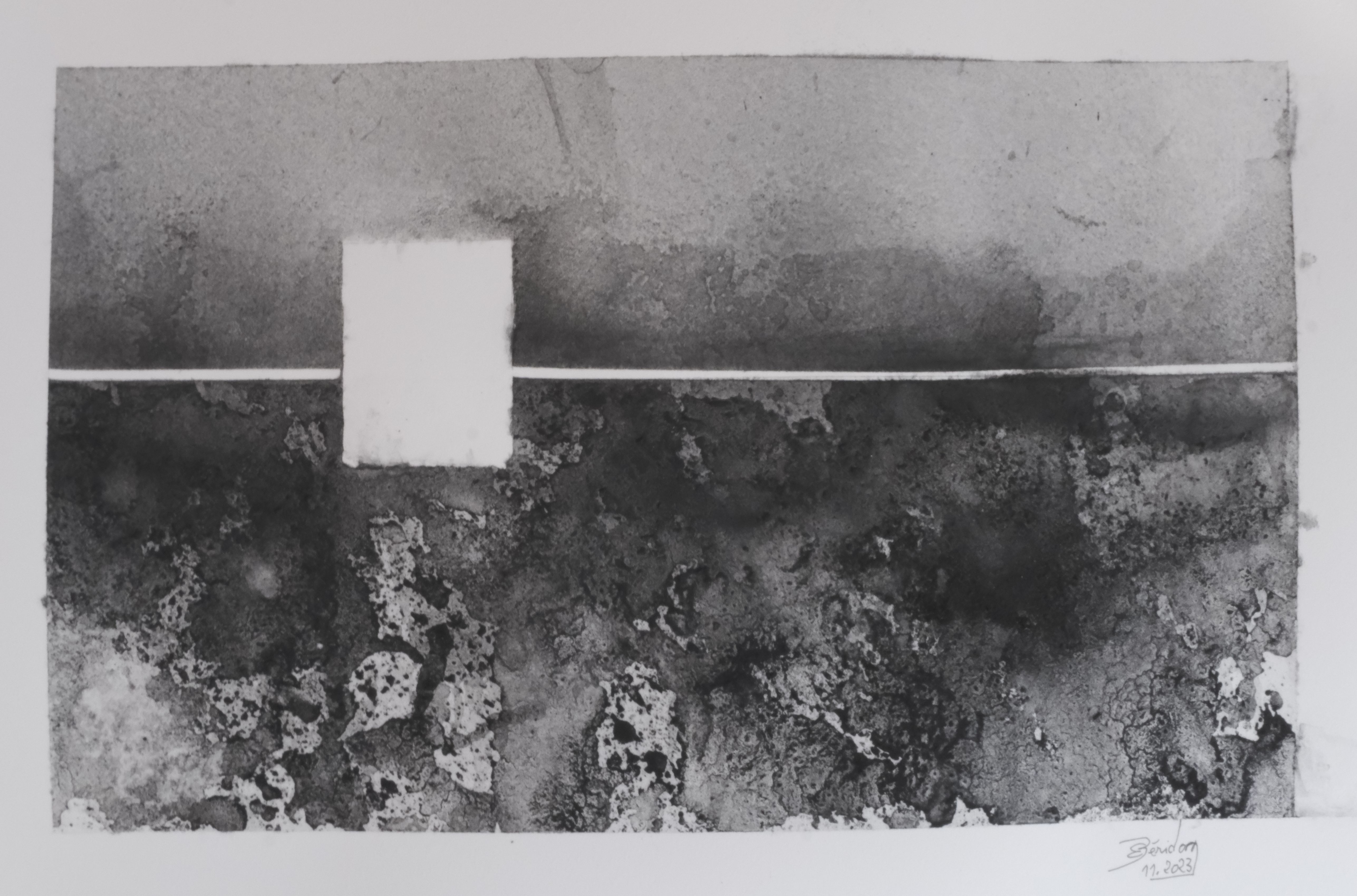
Since October 2023, I found a new path in my desire to move towards artwork that's as uncluttered as possible. However, without betraying the axis of my research, that is to track down the essence of life beyond existence.
Through a series of works on paper, for which I used wood charcoal, not as glued blocks of material nor for the texture obtained when rubbed like charcoal, but for the tiny grains of matter that make it up.
Scattered and fixed on the white sheet, they contribute to the emergence of a light that seems to come directly from within the page.
An economy of means that allows me to preserve the random drawing and to keep the vibratory aspect obtained in the series of artworks F and PF by illuminating the materials with LEDs.
I also obtained clean lines by removing substance with strips of adhesive paper previously glued on. This principle of reverse printing allows me to remove rather than add, while maintaining the structured appearance of some of my work."
Through a series of works on paper, for which I used wood charcoal, not as glued blocks of material nor for the texture obtained when rubbed like charcoal, but for the tiny grains of matter that make it up.
Scattered and fixed on the white sheet, they contribute to the emergence of a light that seems to come directly from within the page.
An economy of means that allows me to preserve the random drawing and to keep the vibratory aspect obtained in the series of artworks F and PF by illuminating the materials with LEDs.
I also obtained clean lines by removing substance with strips of adhesive paper previously glued on. This principle of reverse printing allows me to remove rather than add, while maintaining the structured appearance of some of my work."
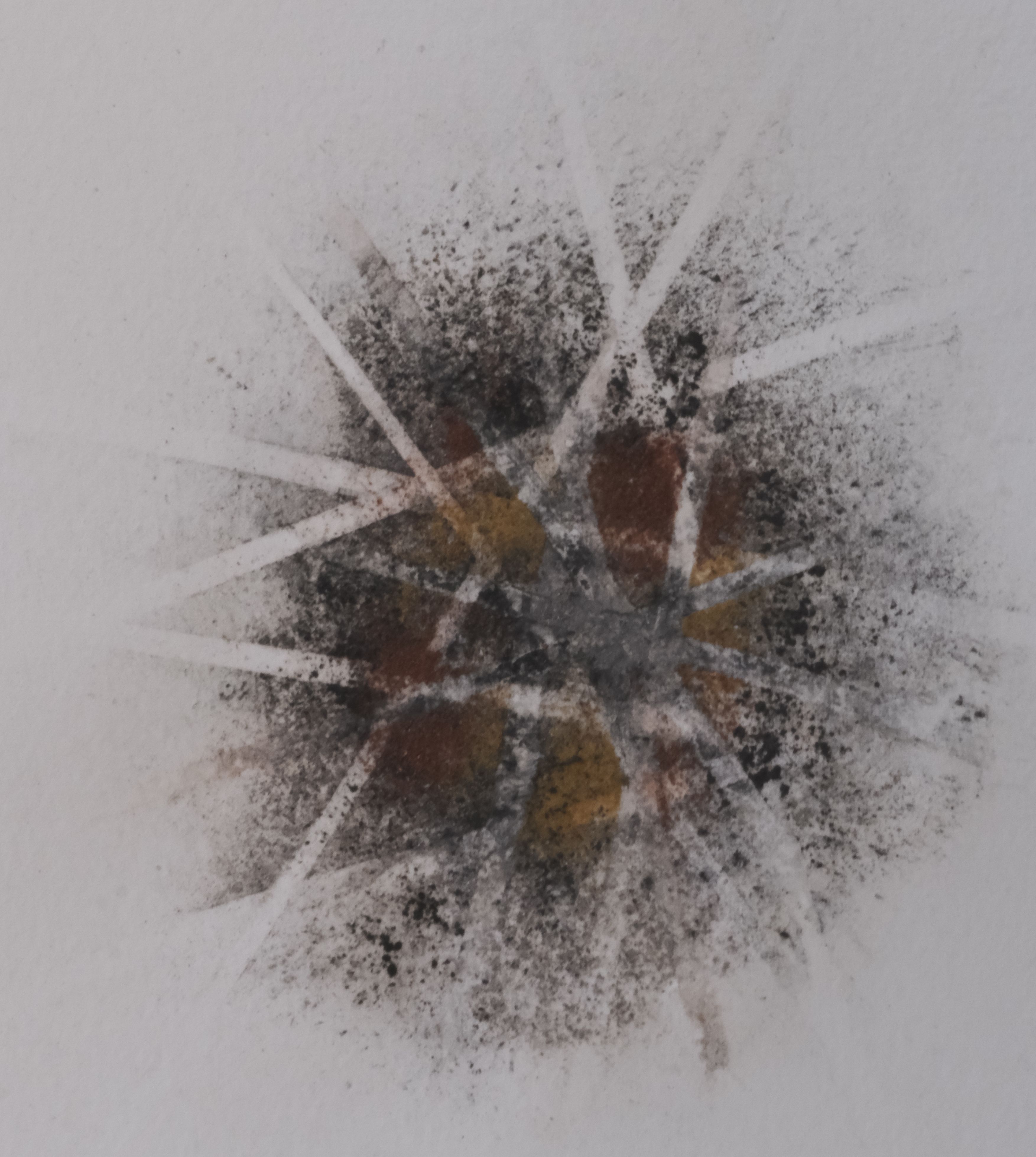

"Show the essential (the invisible) with almost nothing"
I consider a piece successful when it can be approached both physically (through feeling) and more intellectually.
I do not disrepute the emotion aroused by the contemplation of an artistic work because I do not deny the body to the benefit of the spirit. I like the pleasure of watching my artworks once finished: it is not a question of aesthetics or taste, but of vibrations giving to the viewers the possibility of approaching them differently.
Of course what underlies my work is the intellectual thing.
I use philosophy and sciences to support my reasoning and it is the plastic language that comes to materialize the purpose of my research, that is to say the link between material and spiritual.
The focus of my research and obsessively will remain the same, All the complexity and all the paradox will be to tend towards a purification more and more advanced, the ultimate work being to show the essential (the invisible) with almost nothing."
I do not disrepute the emotion aroused by the contemplation of an artistic work because I do not deny the body to the benefit of the spirit. I like the pleasure of watching my artworks once finished: it is not a question of aesthetics or taste, but of vibrations giving to the viewers the possibility of approaching them differently.
Of course what underlies my work is the intellectual thing.
I use philosophy and sciences to support my reasoning and it is the plastic language that comes to materialize the purpose of my research, that is to say the link between material and spiritual.
The focus of my research and obsessively will remain the same, All the complexity and all the paradox will be to tend towards a purification more and more advanced, the ultimate work being to show the essential (the invisible) with almost nothing."
Interviews of the artist about his artistical statement
These interviews carried out at the Fernet-Branca Foundation on July 1, 2020 aim to answer the following questions: What is the axis of the artist's work? What form does his work take? What are his sources of inspiration?
Legal references
All rights reserved © éric béridon 2007-2021
Legal deposit 2020 - ISBN 978-2-9534504-1-5
All rights reserved © éric béridon 2007-2021
Legal deposit 2020 - ISBN 978-2-9534504-1-5